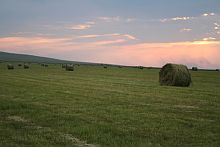Government acts to protect South Africa’s grasslands
|
In July 2010, Buyelwa Sonjica, Minister of Water and Environmental Affairs and eight MECs responsible for environmental affairs from Gauteng, North West, Eastern Cape, Mpumalanga, Limpopo, Northern Cape, Free State, KwaZulu-Natal and the Western Cape signed the Grasslands Declaration committing Government to the conservation of grasslands biodiversity.
The Declaration is a collective effort to pursue biodiversity targets and objectives in securing and sustaining the ecosystem services of the grasslands biome. The goal is to sustain and secure biodiversity and associated ecosystem services of the grasslands biome for the benefit of current and future generations.
The Declaration also intends to take active measures to involve a wide range of interested and affected parties, including local communities and resource users in the management and conservation of biodiversity in the grasslands biome.
The grasslands biome is the second largest biome in South Africa, covering an area of 339 237 km² . It occurs in eight of South Africa’s nine provinces and is one of the most threatened biomes in the country, with 30% irreversibly transformed and only 1.9% of the biodiversity target for the biome formally conserved.
The economic heartland of South Africa
Minister Sonjica said that the grasslands biome contains the economic heartland of South Africa and produces the bulk of water needed to sustain human life and underpin economic growth. Grasslands provide essential ecosystems services such as water production and soil retention necessary for economic development. It moreover contains important biodiversity of global and domestic significance and value.
Sonjica said, “Several of South Africa’s priority river catchments occur in the grasslands biome, including the Thukela River catchment. Good management of South Africa’s mountain grasslands will result in more water released back into the river catchment system in the form of 12, 8 cubic metres of water in winter riverflows. In rand value, this equates to between R18 million and R88, 7 million per annum.”
Grasslands Programme
Government established the Grasslands Programme to protect and conserve grasslands. The Programme’s unique conservation approach includes working with various production sectors to reach conservation targets. The Grasslands Programme is managed through the South African National Biodiversity Institute (SANBI) in collaboration with the Department of Environmental Affairs.
The ecosystem services and biodiversity of the grasslands are found across the biome and cannot be secured only through formal conservation areas.
The Grasslands Programme seeks to implement an alternative approach of mainstreaming by working in partnership with the agriculture, forestry, urban development and coal mining sectors to secure and sustain grasslands. In Wakkerstroom, commercial and communal farmers are committing to manage their land in a way that protects biodiversity through stewardship. The Programme is also working with land reform beneficiaries whose land contains important biodiversity.
The Grasslands Programme and Forestry South Africa (FSA) are working with forestry companies to set aside 37 sites comprising approximately 42 000 hectares for conservation. This is an important step the commercial forestry sector is taking to conserve biodiversity-rich land and protect the water production value of the grasslands.
The significance of this action is that, collectively, these sites will extend the area of the grasslands biome under formal conservation by almost 5%.
Further information:
Grasslands fact sheet






